Abstract
The article discusses the problems of a professional art education, teaching one of the main academic disciplines - composition, which studies the laws of art forms creation using the means of artistic expression, techniques and the organization of image perception. A compositional way of thinking according to the authors is of an artistic and plastic nature and is based on operating the language of art and is aimed at creating a new, holistic, original artistic image. The authors distinguish a compositional thinking as one of the most important professional qualities of the artist, and disclose the methodology of its formation among students of artistic directions. The process of teaching to compose: creation of a picture, a drawing, a sculpture or design an object cannot be built as a simple linear process of teaching image methods, compositional rules and techniques. The author’s methodology is based on the method of problem tasks, which involves setting a creative task, creating a problem situation; comprehension, acceptance and resolution of the problem when students master the generalized methods of artistic and creative activity. Moreover, the creative process is considered as a series of successive stages associated with the work of a productive or creative imagination requiring the provision of visual or other information in the process of work. The article presents the results of the ascertaining and forming stages of experimental work on the development of compositional thinking of artist students in the development of expressive means, as well as compositional techniques and rules.
Keywords: Artistic imagecompositioncompositional thinkingexpressivenessproblem-based learning
Introduction
Composition is the basic discipline in educational institutions of an art profile. Composition is one of the main categories of fine art which in the narrow sense refers to the arrangement of image elements on a plane and in space, in broad sense refers to the whole process of composing a work. The composition combines all the components of the art form (drawing, line, color) into a single whole forming a complex structure.
Composition in plastic arts and design is based on the principles of integrity and novelty. The integrity of a work of art is a unique combination of elements selected with the aim of revealing the most artistic-figurative content. Novelty is the result of a creative search and individual metaphoric plastic solutions.
Teaching a composition is a process of students’ compositional thinking developing, it involves the development of creative intuition on the one hand and on the other hand a mastery of certain rules and techniques, and means that are determined by a figurative design and a specific type of art (painting, graphics, decorative art, design). Composite thinking is of an art-plastic nature based on operating the language of art and is aimed at creating a new, holistic, original artistic image.
Problem Statement
The development of students’ compositional thinking occurs in the process of mastering the artistic and expressive means solving plastic problems. This thinking is of a special nature and occurs on the basis of operating with visual images.
Rubinstein (1989) wrote that thinking correlates the data of sensation and perception it compares, distinguishes, reveals relationships and through it uncovers their new abstract properties, unfolding features and cognizing the essence of phenomena.
Compositional activity is also accomplished through mental operations: comparison, analysis, synthesis, abstraction, generalization, specification of visually perceived objects and phenomena (Vlasov, 2019).
Comparison is a comparison of objects, their shape, color, size, texture, determining the similarities and differences.
Analysis is the mental dismemberment of an object into parts, the allocation of individual features (geometric, physical, aesthetic) in it.
Synthesis is a mental combination of the individual elements of the image, their properties and features into a single whole.
Abstraction is the mental selection of individual properties and attributes of objects (shape, color, line, silhouette, texture) and the rejection of the rest.
Generalization is the mental union of objects and phenomena in groups according to individual characteristics (form, color, line, silhouette, texture), which are taken for the main and most significant ones.
Specification is a mental transition from the general to the individual, the allocation of individual details.
At the same time creativity is the unity of rational-logical and emotional intuitive processes, it proceeds largely unconsciously and is based on the sensory sphere.
Compositional thinking is associated with the artist’s ability to organize the art form to make it holistic, original and expressive, and to make it evoke an emotional response from the viewer. Composition is a peculiar form of creating a dialogue between the artist and the audience, it is based on a special visual language.
Composition as an educational discipline studies the laws of creating an art form, using means of artistic expression. In the studying process, the following composition tools are mastered helping to organize the perception of the image:
compositional center;
rhythm;
equilibrium (static- dynamics);
contrast-nuance;
scale, proportions;
likeness-difference.
Working with the image requires the development of the visual culture of students, expressed in the peculiarities of perception, organization and evaluation of visual information of surrounding objects. Professional visual culture includes: visual experience represented by accumulated visual images and standards; values, aesthetic and artistic norms; rules governing artistic and creative activities in accordance with the values of visual culture (Purik & Shakirova, 2016; Venera, Zakirova, & Purik, 2016). The development of students’ compositional thinking requires the development of special formal exercises for the development of compositional tools, that are to be of concerning character.
Research Questions
Our research was carried out during the composition classes of the art and graphic faculty students. We have developed a series of creative exercises aimed at developing students’ compositional thinking. The program included exercises in printed graphics (letterpress - engraving on cardboard, linocut; gravure printing - dry needle technique), as well as unique graphics (watercolor, gouache).
The classes were built on the principle of providing all stages of the creative process with everything necessary to create an artistic image. We proceeded from the fact that a full-fledged creative process is possible only if at each class conditions for creativity are created as well as a special, artistic and creative setting for the productive work of the imagination.
The essence of artistic creativity lies in an emotionally-shaped reflection of reality. The process of teaching composition is a process of creating a picture, drawing, sculpture or design object and it cannot be built as a simple linear process of teaching image methods, compositional rules and techniques. All this is just material that should be used on an intuitive level. The process of artistic creation consists of the bearing of the main idea, the emergence, associations, the search for images adequate to the idea, image details, images, the embodiment of the idea in the material using appropriate expressive means.
The creative process ends with the creation of an artistic image. An image is the result of the reflection of reality; it is the result of the compositional activity of the artist, which has a specific sensual expression. The image in the visual arts is an expressive image (Kagan, 1997).
An artistic image is created by means of an artistic language i.e. compositional techniques and means, color, line, stain and conveys the artist’s thoughts and feelings, his understanding of beauty, individual aesthetic and plastic preferences (Purik & Shakirova, 2016).
The artistic image has the novelty of design, content, as well as the novelty of the form, the technical methods of its embodiment in a particular material.
Purpose of the Study
In developing techniques for teaching composition in art education, two main groups of problems are solved:
The problems of content (choice of topic, its individual understanding and implementation, plot);
The problems of form (choice of means of expression, material and technique).
In the process of teaching composition, the creative abilities of students, compositional, imaginative thinking develop, allowing to create something new in art, but the development of a methodology for their development presents significant difficulties since creative processes cannot be regulated directly.
The complexity of the development of compositional thinking which is based on artistic-figurative thinking and is of a plastic nature lies in the very nature of imagination as a mental process.
Imagination is the process of creating new images from old stocks of ideas and impressions. At the heart of a creative productive imagination is the transformation of existing experience. Moreover, such a “transformation of reality in the imagination is not its arbitrary change; it has its own natural ways which find expression in typical methods or techniques of transformation” (Rubinstein, 1989, p. 284).
Based on this the process of developing imagination in the process of artistic and creative activity should be aimed on the one hand at developing students’ experience - emotional, cognitive, visual and on the other hand - at developing the ability to operate these images, process them and transform them individually featured.
Moreover, such work on the organization of creative activity requires a flexible, non-linear approach, the creation of the necessary emotional background, the artistic and creative attitude towards creating a new, original image.
Such an attitude cannot be a direct instruction. Kagan (1997) notes that:
... We are talking here about the unconscious stimulus and guideline that each person develops during his practical life and aesthetic education and directs his attention to the daily perception of the environment - natural, human, architectural, material, not to mention works of art (p. 253).
The problem of the development of students’ compositional thinking requires the development of a methodology for conducting classes and a specific system of plastic exercises for students aimed at mastering the language of art in the process of solving creative, artistic-figurative tasks.
Research Methods
Creativity in art is a process leading to the creation of new, objectively significant artistic values (Guilford, 1967). Students’ activities even when performing simple training exercises has the elements of creativity.
A routine and uncreative activity can be considered an activity that is completely determined by the system of skills mastered by students and is performed automatically and the result is schematic. As a rule, in case of sufficient students’ engagement in art game elements and unpredictable discoveries are made. The basic signs of creative activity are search activity, enthusiasm and interest of the individual, and the most important thing is a fairly free transformation of visual impressions and ideas, improving art skills.
In psychology they distinguish a number of successive stages of the creative process: preparation: formulation of the problem and initial attempts to solve it; incubation: distraction from the task and switching to another subject; insight; verification and/or implementation of the solution (Graham, 1926). Accordingly the artist’s creative process can be divided into the following stages:
1) selection of a topic, the emergence of a plan, the implementation of preliminary sketches;
2) the collection of material, viewing analogues, search for technical methods of image execution;
3) insight, the choice of one of the options for plastic solutions;
4) the implementation of the plan in the material;
5) critical evaluation of the result.
When performing a specific task, this sequence is stored in a compressed and reduced form:
The emergence of the concept entails vague ideas about what will be depicted, a mental image of future work arises, which is specified in sketches. The most important role in training from our point of view is played by the creation of interest in the problem to be solved, the emotional background, the artistic and creative attitude, that is, the problem statement of the task and the use of the problem task method (Evtikh, 2005).
Stage 2. In order to present the image of the future work in a better way, to endow it with specific stylistic features, students need to see a certain visual range, i.e. photographic material, nature observations, analogues. Simple viewing is not enough, the work of the imagination is based on combining individual forms, parts, elements, as well as changing (colors, sizes, proportions, textures) and emphasizing some sides of the image (Figure
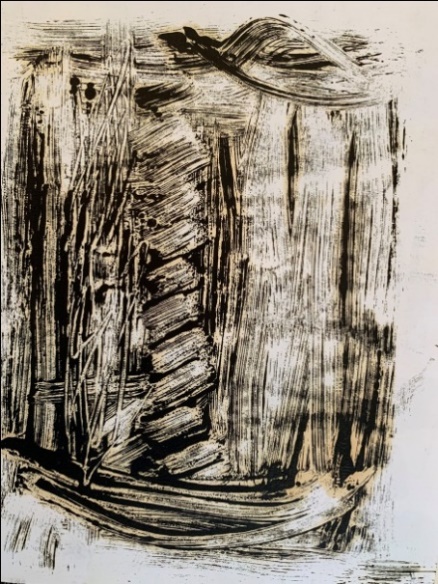
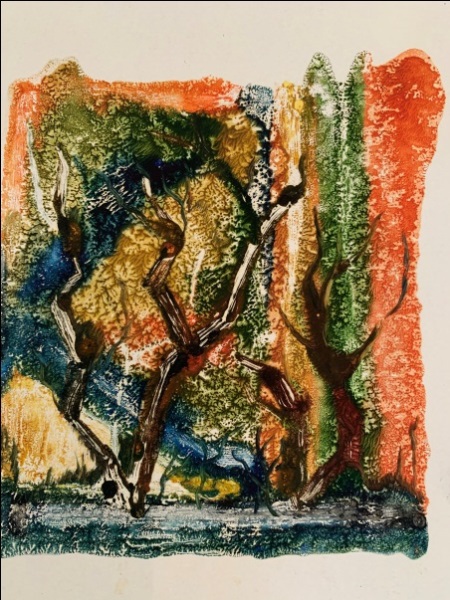
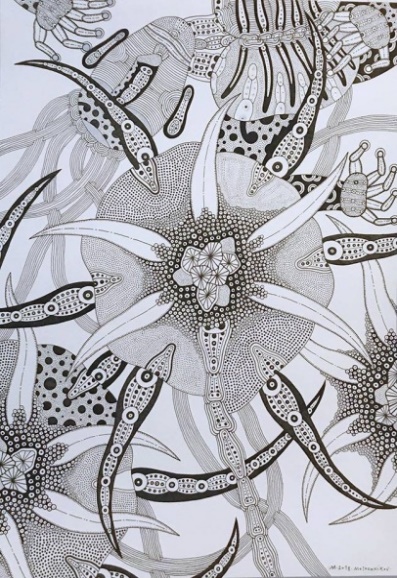
The image of future work is determined by the technique of its implementation, so students should be able to choose and also need to show individual techniques and expand the supply of technical skills. New techniques, experiments with methods and material introduce an element of improvisation into the creative process, transforming the original idea to a greater or lesser extent (Vlasov, 2019).
Stage 3. Having received a number of sketches the painter has the opportunity to compare, choose the most successful option and the choice here is made in favor of the most expressive sketch in plastic terms. Discussion the sketches in a group, independent decision, choice of a teacher - all options are possible here, depending on the level of readiness of the student.
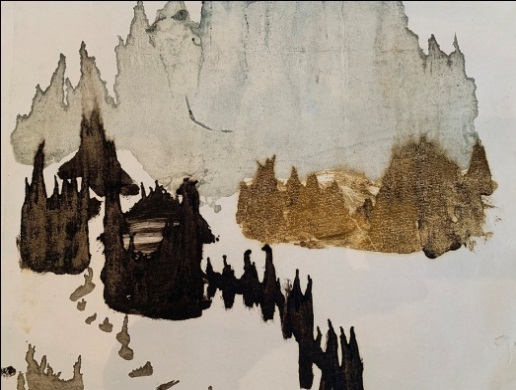
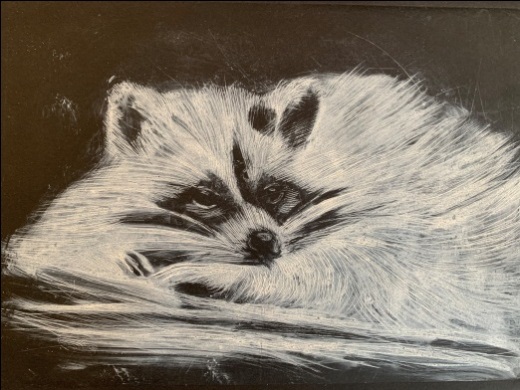
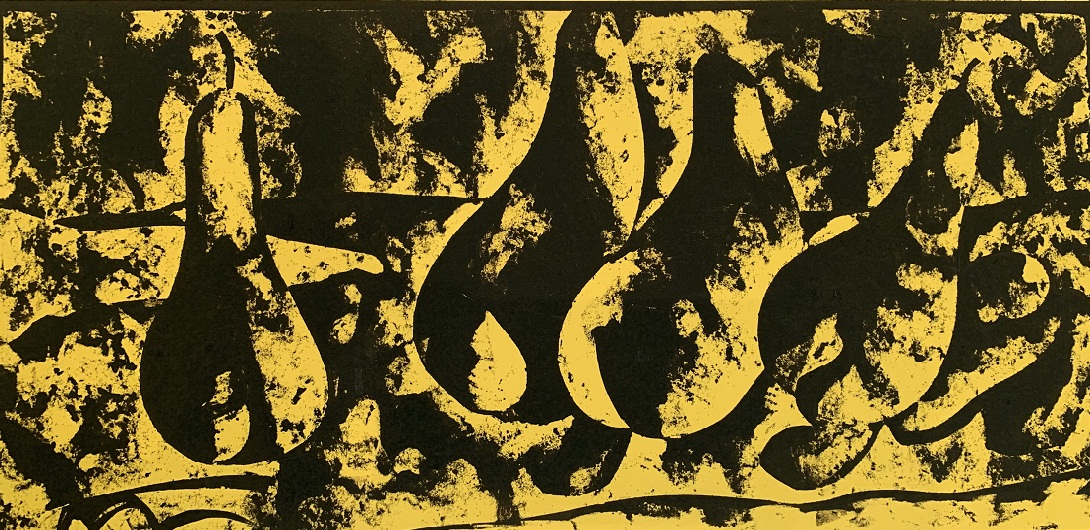
It is especially necessary to disclose the
Problem-based learning involves setting educational and creative tasks by a teacher, creating a problematic situation; comprehension, acceptance and resolution of the problem that has arisen when students master the generalized methods of artistic and creative activity; the use of these methods in their own creativity. The idea of stimulating students' creative activity by setting problem-formulated tasks is in the basis of problem-based learning.
The problematic task in composition teaching is a creative task requiring students to search for new, non-trivial ways of creating images. It is not a simple image from nature or based on a given sample but requires the creative application of compositional rules and techniques, the creation of an original style or image.
The experiment on the development of compositional thinking of students was carried out in several stages:
-study of the initial level of students’ compositional thinking;
-development of a series of formal exercises for the development of artistic and expressive means, the language of art (compositional techniques and means, line, spot, tone, silhouette, color, texture) and conducting classes as part of a formative experiment;
-the final diagnosis of the level of compositional thinking of students at the stage of independent creative activity.
112 students of the art and graphic faculty of the Bashkir State Pedagogical University named after M. Akmulla (control group - 54 people, experimental - 56 people) took part in the experiment. The experiment was held from January 2016 to December 2018.
The initial level of development of the compositional thinking of 1st year students was studied at a ascertaining stage on the basis of the first tasks on composition, which included the image of simple objects (home plants, a still life of small objects of a flat shape, a still life of household objects, a landscape) with further processing of the form and stylization.
The study of works showed that for most students it is difficult to choose the subject of the image and the way it is displayed. Students’ works are uniform in subject matter, sketchy, and unexpressive. The main criteria for evaluating the work were: general expressiveness of the work, originality of the idea, knowledge of the rules and techniques of composition, the ability to apply them in their work, mastery of a line, stroke, tone, image technique (Table
An analysis of the results of the ascertaining stage of the experiment showed that the majority of students in the control group remained at an average level (56.0%), only the most gifted students (18.0)% reached a high level, 26% of students showed a low level.
The experimental group has similar results: the average level is 54.0%, the high level is 20.0%, and the low level is also 26% of students.
At the next (formative) stage of the experiment (during 2016-2018, i.e. from the 3rd to the 7th semesters) classroom lessons were conducted according to the method developed by us. The training program was based on a phased mastery of compositional rules, techniques and means and each task began with the creation of a problematic situation. The problematic situation was a specific artistic-plastic (problem) task, which included mastering the various possibilities of art materials and techniques (watercolor, gouache, monotype, diatype, scratchboard, “dry needle”).
The problematic task in the compositional classes is to create new, original images that arise in the imagination of students in the process of working with specific artistic material, mastering its expressive capabilities.
The results of the formative stage of the experiment showed that the quality of creative work reflecting the level of development of compositional thinking of students increased in such fields as:
- mastery of artistic means, rules and techniques of composition;
- the creation of a new, original image, the desire for an independent search;
- going beyond the task;
- expressiveness, emotionality
Improving the quality of creative work in the control group (CG) is noticeably higher than in the experimental group (EG) (Table
The process of creative growth of each student is individual and depends on the level of development of artistic and creative abilities and artistic training. In the course of the study we came to the conclusion that the level of compositional thinking of students depends on individual artistic and creative abilities as well as on the teaching style and methods of organizing artistic and creative activities. Students are better than others in solving creative problems if a favorable psychological atmosphere is created at the class if they are placed in a situation of free choice, experimentation, , when the problematic teaching methods are used (Matyushkin, 2008).
Findings
The conducted experimental work allowed to formulate the following conditions for the development of compositional thinking of students:
1. A specially designed system of more complexifying exercises is needed, aimed at the development of plastic thinking through the study of basic techniques, rules and means of composition and expressive means.
2. Creation in the learning process of an orientation toward creativity, based on a situation of novelty, co-creation, psychological support for everyone increasing motivation for classes.
3. The use of problematic teaching methods that stimulate the creative activity of students, aimed at developing the ability to free experiments with material and improvisation.
4. Reliance on visual information, examples of creative work, full-scale sketches, photographs, demonstration of work performance techniques, their discussion, analysis and evaluation based on objective criteria during the work:
compliance with the task;
mastery of compositional means;
novelty, originality;
expressiveness.
The success of this work is partially due to the fact that it was carried out at the composition class of the unique and printed graphics. Perhaps during such experimental work at painting classes, which require great efforts to master the technique and methods of working with paints the results will not be so noticeable. In the process of the experimental work, we also found out that a number of students showed a consistently low result, despite the work carried out to create the conditions for providing the creative process with everything needed. This is an average of 15 and 10% of students, respectively, who can hardly solve creative problems preferring to work according to the model, use ready-made methods of work without feeling the expressive capabilities of techniques and material. This type of students is of stereotypical way of thinking, has little experience exploring art, and has a low level of motivation for creativity. It is necessary to develop additional courses that allow in an entertaining form to create a steady interest and positive motivation for art classes and solve this problem.
Conclusion
The results of the experiment showed that the organization of the educational process based on the use of the method of problem tasks and creative environment that meets the requirements of comfort and safety, the activity of each participant explaining and showing the technological and artistic and aesthetic aspects of the work, increases the effectiveness of training.
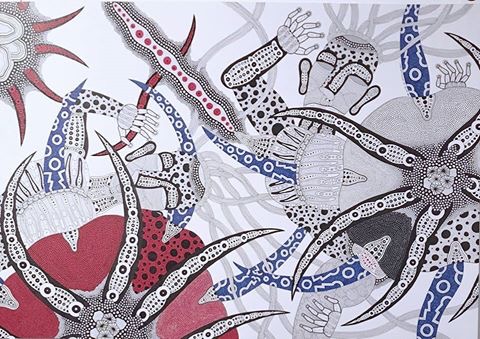
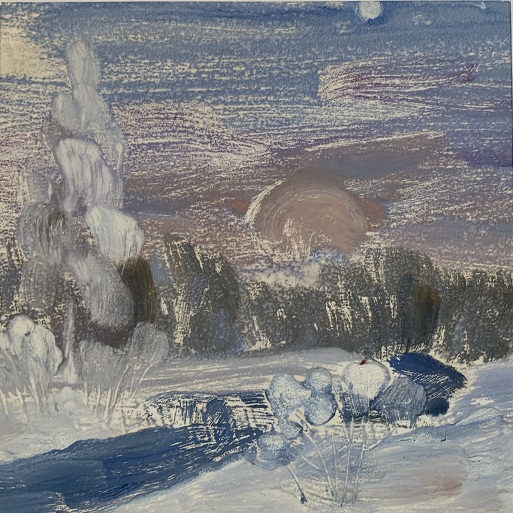
As a result of the experimental work we came to the conclusion that the use of a series of complexifying problem tasks based on mastering the language of art in the form of free improvisation improves the quality of students’ creative work, their emotionality and expressiveness, the level of students’ compositional thinking (Figure
Along with the direct result - the level of development of students’ compositional thinking we can state the side effects:
increasing motivation for creativity, interest in art;
understanding the plastic language of art, mastering a variety of ways to work with the image;
shift of emphasis from image technique to expressiveness;
the ability to experiment with art materials, means of artistic expression to create new art.
The experiment showed, one of the leading psychological conditions leading to the success of creative activity is conscious freedom providing ease, a tendency to improvise in working with material. The teacher’s task is to reveal the complex of educational and creative tasks (rhythm, balance, contrast, statics, dynamics, etc.) in the disclosure of each topic. Problematic teaching methods are aimed at stimulating creative activity, improving the quality of the result, both external (figure) and internal (attitude to art, understanding of its value) for all students.
References
- Alekseeva, L. N. (2010). Osvoenie principa refleksii v sisteme razvivayushchego obucheniya [Mastering the principle of reflection in the system of developing education]. Psychological science and education, 4. Retrieved from: http://psyedu.ru/journal/2010/4/Alexeeva.phtml
- Evtikh, S. Sh. (2005). Razvitie tvorcheskikh sposobnostej budushchikh dizajnerov sredstvami formal'noj kompozicii [Development of creative abilities of future designers by means of formal composition]. Bulletin of Orenburg State University, 6, 60–63.
- Graham, W. (1926). The Art of Thought. New York: Harcourt Brace.
- Guilford, Y. P. (1967) .The nature of human intelligence. New York: Mc-GrawHill.
- Kagan, M. S. (1997). Aesthetics as a philosophic science. St. Petersburg: Petropolis.
- Matyushkin, A. M. (2008). Problemnye situacii v myshlenii i obuchenii [Problem situations in thinking and learning]. Moscow: Direct-Media.
- Purik, E. E., & Shakirova, M. G. (2016). The formation of creative environment as a factor of professional development of design students. Design and architecture in the contemporary world, 145-155.
- Rubinstein, S. L. (1989). Osnovy obshchey psikhologii: v 2 t. T.1 [Fundamentals of General Psychology: in 2 vols. T. 1.]. Moscow: Pedagogika.
- Venera, G., Zakirova, E., & Purik, E. (2016). Creative Environment Formation in Design Professional Training. International Journal of Environmental & Science Education, 11(9), 2323-2332.
- Vlasov, V. G. (2019). Obrashchaemoe prostranstvo v izobrazitel'nom iskusstve i proektivnom myshlenii [Space in Visual Arts and Projective Thinking]. Architecton: izvestiya vuzov, 1(65), 1990–4126.
Copyright information

This work is licensed under a Creative Commons Attribution-NonCommercial-NoDerivatives 4.0 International License.
About this article
Publication Date
15 November 2020
Article Doi
eBook ISBN
978-1-80296-092-1
Publisher
European Publisher
Volume
93
Print ISBN (optional)
-
Edition Number
1st Edition
Pages
1-1195
Subjects
Teacher, teacher training, teaching skills, teaching techniques, special education, children with special needs, computer-aided learning (CAL)
Cite this article as:
Purik, E., Masalimov, T., & Shakirova, M. (2020). Problem-Based Methods As A Means Of Compositional Thinking Development Of Artist Students. In I. Murzina (Ed.), Humanistic Practice in Education in a Postmodern Age, vol 93. European Proceedings of Social and Behavioural Sciences (pp. 807-817). European Publisher. https://doi.org/10.15405/epsbs.2020.11.83

